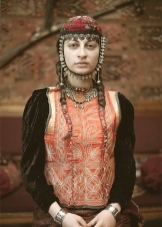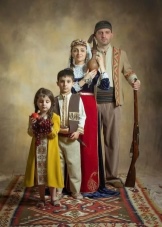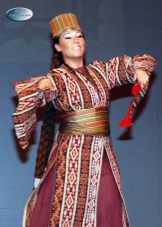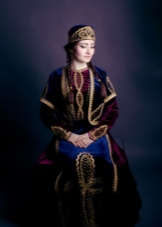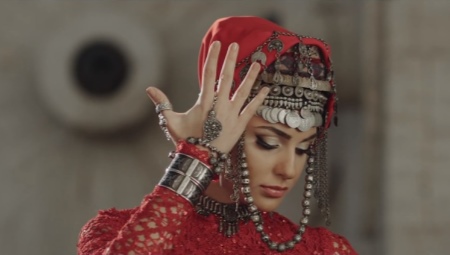The history of the costume goes back thousands of years. It developed in dozens of countries in different ways: somewhere - independently and separately, and somewhere - changing to the tastes of people. The traditional costume, in addition to its main function, could tell others about the place of residence of the person wearing it, about his activities, the history of his family, family status and much more.

The development of the traditional costume and the birth of the country itself are inseparable, and the Armenian national costume (Taraz) began its own appearance about three thousand years ago, in the century of the birth of the Urartian kingdom.
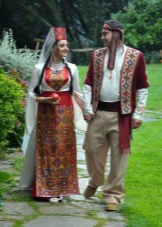


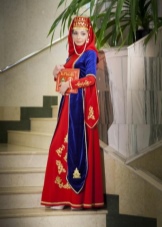
A bit of history
Urartu is a state located on the Armenian Highlands in IX BC. e. Undoubtedly, the united many tribes had their own distinctive features of the costume, but, unfortunately, information about them was not preserved.
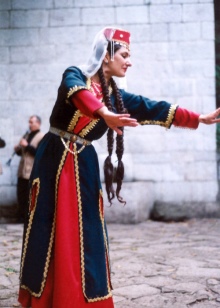

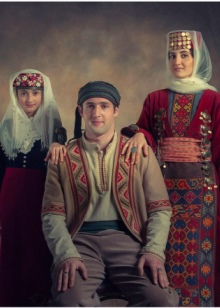
Following the Urartian kingdom in 189 BC. e. the kingdom of Artashesis came, uniting the vast majority of people who consider Armenian their native language. The art of artisans grew rapidly in Armenia, market relations developed with Iran, Indian peoples and Chinese, cities near the Mediterranean and Black Seas, and all this influenced the outfits of the inhabitants of sunny Armenia.
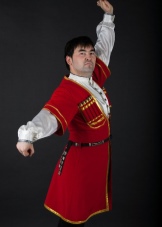
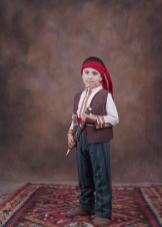
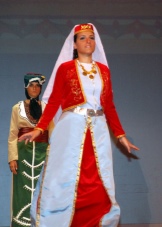
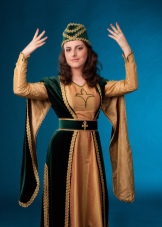
The baptism of the state dragged Armenia into a confrontation with Byzantium. There is very little knowledge about the folk costume for this period, but it is known for certain that the nobility preferred the outfits of the Persian court, while the rest of the population dressed quite ordinary.

During the period of Arab influence (640-885 gg.) Some of the merchants and princes adopted some details of the Arabian clothes. 1080-1375 brought details of European costumes to the national costume of Armenia. The Tatar-Mongol raids of the 13th-14th centuries also did not leave the national clothes of the Armenians unchanged.During the Persian wars, three-quarters of Armenia was captured by the Ottoman Empire, but the rest of the land was still controlled by Iran, which, in turn, also had its effect.
Thus, the costume, passing through time, wars and peace times, times of growth and decline, borrowing and giving back, assumed its own unique look.
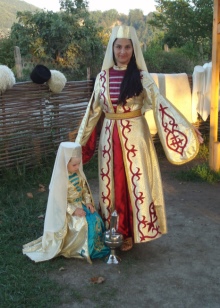
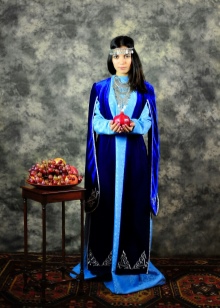
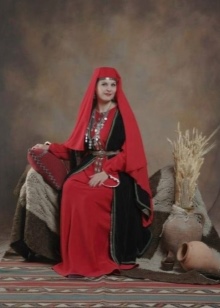
Male models
The center of the men's traditional outfit in Armenia is a shirt with a low collar, called a "cap", and extensive harem pants, which are called a "shalvar", pulled down with a wide winding. The trousers were encircled with an ocular (Khojan) of small width, embroidered with various patterns and even tassels at the ends.
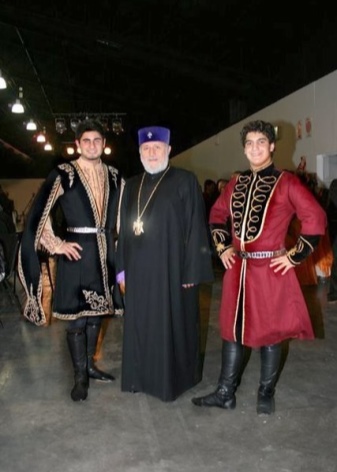
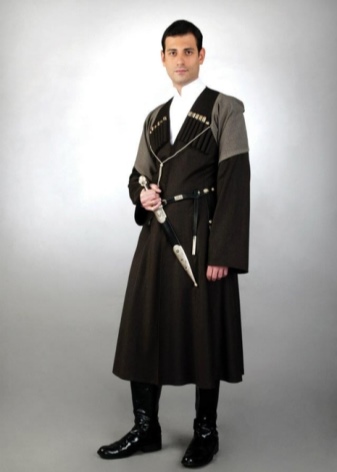
In eastern Armenia, they dressed in archalukh over their shirts - a hinged cloak fastened with small buttons or hooks, from the neck to the waist. A warm sensation rushed over the archalukk - a caftan-like outerwear.
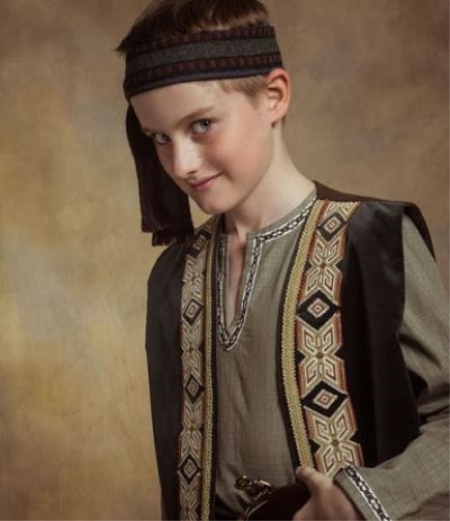
In the west of the state, an archaluk is replaced by a fir tree - a vest worn on a shirt with sleeves decorated with embroidery. The tree was covered with a jacket with a one-piece sleeve, without fasteners, called the "buccon". The Shalvars, on the other hand, lurked strongly below and were called the Wartik. Beauty along with embroidered with a natural plot.

In cold weather they dressed in a sheepskin casing, and in warm regions they used vests made of goat hair - Kazakh.
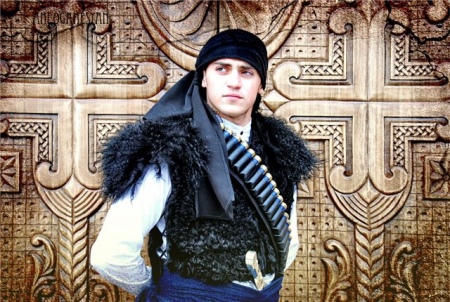
Female models
The basis of the women's wardrobe was: a spacious shirt - halvah with oblique mutual inserts, extensive straight sleeves, an oval neck opening and a hollow on the chest, scarlet from the residents of the east of the country, and light from the Armenians living in the west, as well as harem pants - stitched, sewn red cotton and gathered at the ankles. Ladies' archalukus dressed in bright colors, for example, blue, green or grape shade, was dressed on top, and there was a long neck on the chest.

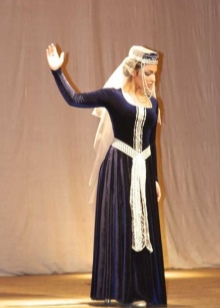

He was smelling only at the waist. Below the belt on the archalukh, a pair of vertical cuts were made on the sides, and it turned out that the archalukh had three floors: the first, large, behind, and a smaller pair on the sides. Therefore, the female archaluk has another designation - “Perekani heresy”, which is translated from Armenian as “three floors”.
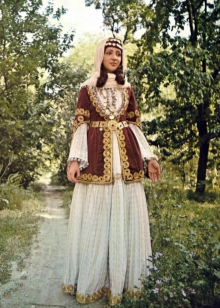
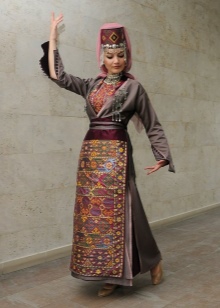
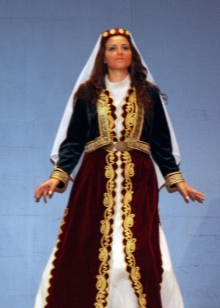
On festive days, a dress was put on the archalukh - mintan, which was almost no different from the archalukh, but was devoid of side cuts. A scarf made of beautiful fabrics or wool was tied to the belt, subsequently replaced with silver and gold belts, and the sleeves of the shirt were fastened with spherical buttons. A large veil made of fine wool was thrown over upon leaving the house. In older women, it was a blue hue.
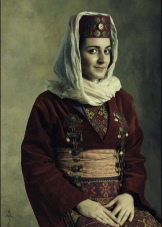
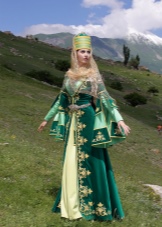
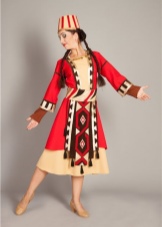
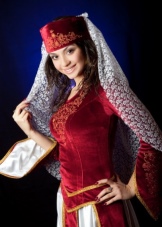
In the western regions of Armenia, instead of an archalukh, they wore a dress sewn from silk or batiste with cutouts below the waist, called "antari". In winter, a juppa was worn on top - another outfit, without mutual armholes. Juppa, for the most part, was sewn from dark blue cloth.
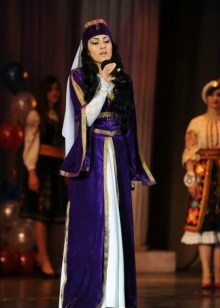
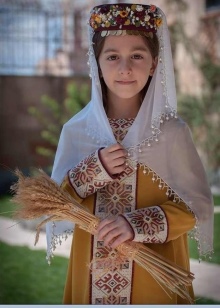

An important fragment of the woman’s outfit was a braid apron with a narrow woven girdle - a chognos. Absolutely all the vestments of the ladies possessed exquisite sewing; in rich families, embroidery was performed in silver or gold.
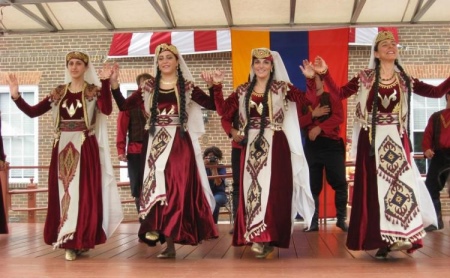
Wedding clothes
The wedding outfit among Armenians differed only in more expensive fabrics, as well as in other color schemes. An important element at the wedding were silver belts handed by the bride's parents during the wedding process.
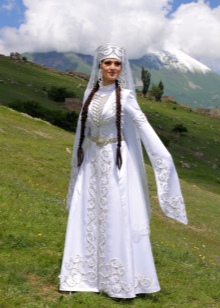
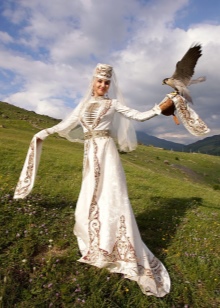
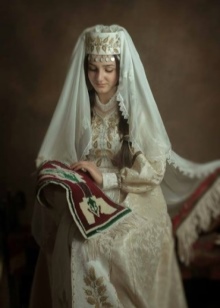
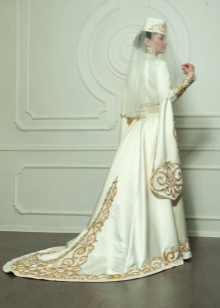
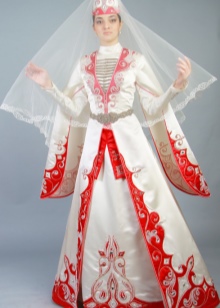
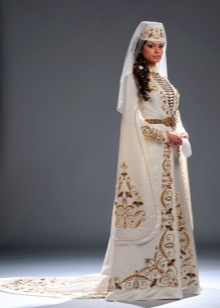
Children's clothes
The national costume for children in Armenia for both the boy and the girl did not differ significantly from the adult. Well, maybe embroidered a little more modestly.

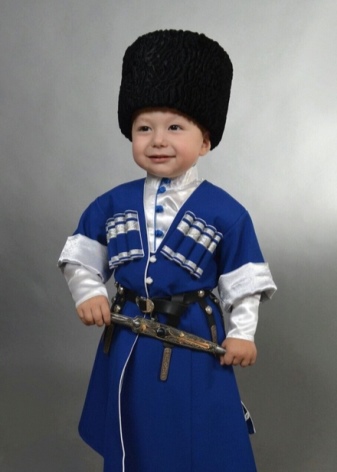
Hats and accessories
Headwear in Armenia is quite diverse. Men’s varied depending on the places of residence: in the east - fur, in the west - knitted and fabric. Lorians liked big short hats, Zangazur men liked hats more, more closely and less magnificent. Urban people wore the highest hats of a cylindrical shape.Hats in the shape of a hemisphere, knitted from threads of the same color, wrapped on top with a twisted scarf, received extensive circulation among residents of the western regions.
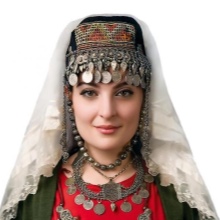
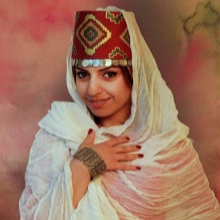
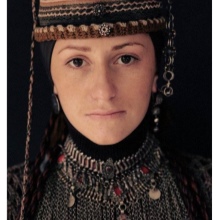
From time to time, hats were knitted of colored threads with a predominance of red, had a conical shape with a truncated top 15-20 cm high and were worn without a scarf. Pointed garments (like those of the nearby Kurds and Assyrians) were also worn in cone-shaped garments, felt hats, wrapping the top with a multi-colored or plain shawl embroidered with a fabulous geometric or floral ornament.
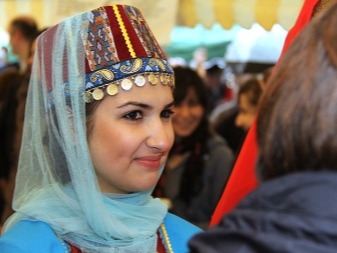
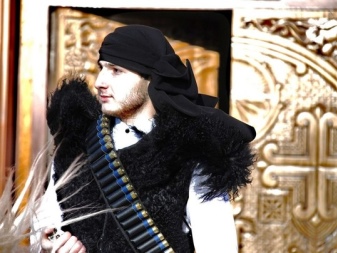
In the eastern regions of the country, women wore hats that resembled a “tower”, eight to twenty centimeters high, glued from layers of cotton fabric. In different regions of the country this decoration was called differently: "palti" (Artsakh, Syunik districts), "fallen", "poly" (Meghri, Agulis districts), "baspind" (Yerevan, Ashtarak regions). Baspind covered part of his forehead, the front side of the "turret" was painted over with embroidered ribbon. As with most of the national clothes of Armenia, the traditional embroidery that adorned the backside had a geometric or floral pattern.
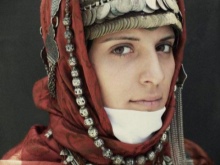
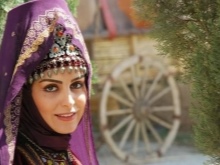

Under the backside, a ribbon with fixed coins made of precious metals was tied to his forehead, jewelry made of silver balls, corals, which almost completely covered his hair, was fastened at his temples. Such an unusual headdress was tied with diagonally folded snow-white scarves of cotton fabric, covering the neck and part of the face to the nose. Initially, the scarves were snow-white, and later - reddish or greenish. Corners tightly tied at the back of the head. On top of the base was covered with a colored shawl, fastened with a chain of precious metal.
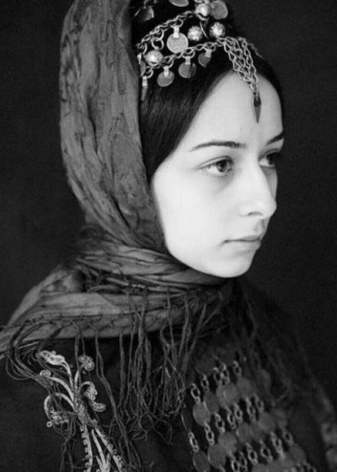
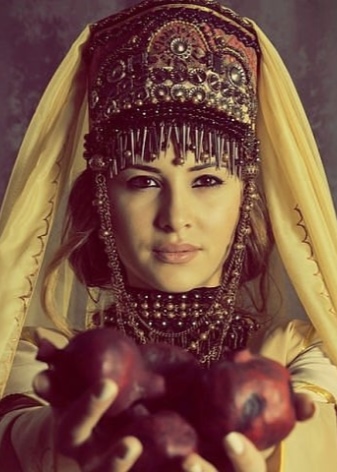
An elegant addition to the headdress were large buttons called “kotosh”. The hostess of such jewelry was crowned with a row of gold coins and a noticeable large coin in the center; intricate pearl jewelry, ending in the finest gold plates, was fastened at the temples. Such an interesting precious adornment, the young bridegroom presented to the young bride on the wedding day. Ward, as a rule, crowned a scarlet hat called "fez" with a silk brush hanging down behind it.
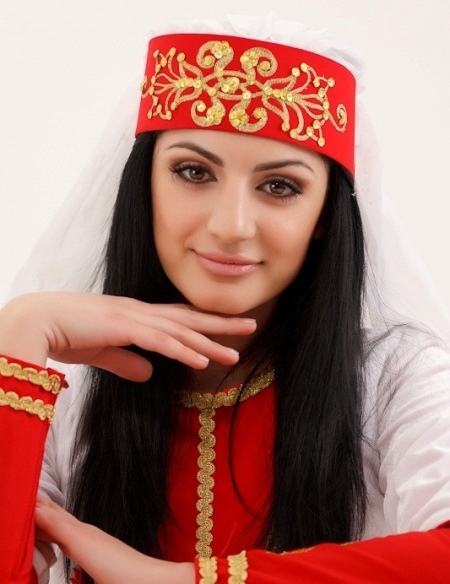
Such a hat was not removed for a long time. At night, the woman slept with a small mattress under her head. They tried to remove the baspind only in the absence of men, since in Armenia, as in most eastern countries, it was forbidden to show bare-headed to outsiders.
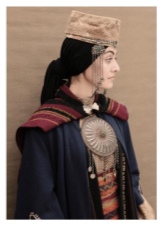

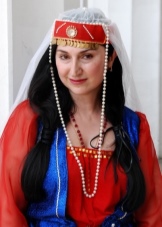
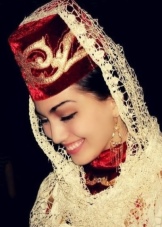
In the west of Armenia, girls decorated their heads with various rims and various shawls. Tall rims made of wood were called “cat” or “ward”. It was hung with velvet, pearls or decorated with classic sewing, whose favorite themes were sky, sun and stars. Subsequently, elegant mascot plates were attached to the embroidered part of the cat. Crowned in this way, the most elegant detail of the cat was called “makhcha” or “knar”.

Ward made of thin fabric glued in several layers. He was also richly decorated with exquisite fabric, precious metals and intricate ornaments. Favorite subjects of patterns were gardens, unusual birds, magnificent flowers.
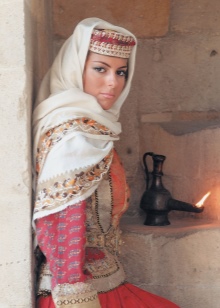

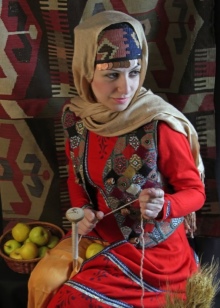
Young unmarried girls braided a huge number of thin braids, the number of which reached forty. To lengthen them and make the haircut richer, woolen threads were skillfully woven into pigtails to match the tone of hair, and were decorated with silver balls and tassels. An Eastern Armenian woman covered her head with colored capes, and in the western part of Armenia women preferred to wear a felt hat called “gtak”, which has the shape of a bucket.
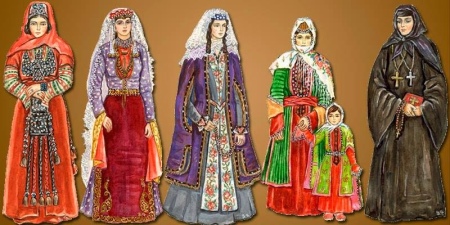
Unfortunately, in our time, national costumes in many countries are not so popular or not used at all because of the abundance of universal European clothes. Of course, for dances, theater, filming and ordinary festivals, they are still indispensable, but less and less we find in everyday life. But the costume will not be forgotten. Like the peoples themselves, the national costume over time takes on new forms, absorbs ideas, and will soon re-enter the everyday life of others, but in essence - all the same.
